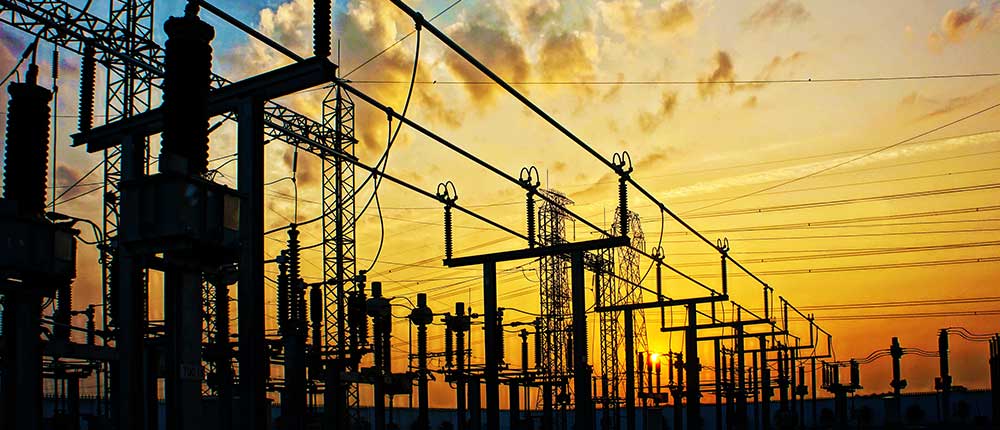Impact of Covid-19 on the Energy and Utilities Sector

The COVID-19 epidemic is the world's most serious public health crisis in recent memory. It has resulted in a significant loss of human life and has impacted millions of people around the world. The epidemic, however, is far more than a health emergency; the economic and social dislocation it causes is genuinely devastating. It has had a significant impact on practically every industry area, including retail, automobiles, and utilities.
The influence of the pandemic on electric utility operations is the subject of this article. We know from experience that utilities provide consistent revenues even when the economy is slowing. When the pandemic broke out in the first quarter of 2020, however, industrial activity was reduced, non-essential commercial activities were nearly halted, and all modes of transportation were put on pause. This has a tremendous impact on various aspects of the utility industry. Reduced demand, worker safety, and the need for digital transformation are all factors that have an impact on utilities.
Power & Pandemic
Power is necessary for economic growth, particularly in emerging markets. SDG 7—Ensure that everyone has access to affordable, dependable, sustainable, and modern energy—is a prerequisite for progress on many other SDGs, including those related to health, education, industry, sustainable cities, and more.
Emerging markets are particularly susceptible to these changes. Despite having more access to electricity in developing countries, over 789 million people around the world are still without power.
COVID-19 has had an impact on the sector, resulting in a decrease in demand, financial hardship, and power supply chain problems. Even for those who believe they can foresee when the storm will pass, relying on a rapid return to normalcy is not a viable plan. Even if there is a quick V-shaped recovery, the impact of the pandemic on previous expectations and future behavior cannot be overlooked. A longer L-shaped recession or a slower U-shaped recovery will have much more serious consequences. Whatever course is chosen, the world will be changed, and businesses must prepare for a new normal.
It will be critical for organizations in the energy, utilities, and resources sectors to combine good scenario planning with an evaluation of how various events may affect their business in the short, medium, and long term. Regardless of the scenario, there are a number of issues that will influence strategic thinking.
Decrease in power demand
The amount of electrical power that must be delivered at any one time to meet consumer needs is known as demand. The drop in demand is largely due to decreased industrial and commercial activities. Lockdowns have had a considerable impact on demand, especially at railways and airports. Because of the drop in demand, utilities have seen a drop in overall revenue.
Tariff structures have had a mixed impact on utility firms as well. Electricity is purchased from generating plants either on the wholesale market or through long- or medium-term bilateral agreements. The purchasing prices are the same for all types of clients, however, tariffs for home consumption are generally higher than those for commercial or industrial use in many nations. Domestic usage climbed during the lockdown, while business and industrial consumption declined, resulting in more revenue for utilities. However, in nations where the average domestic tariff is lower than the commercial and industrial rates, providers have lost additional revenue as a result of the current tariff system.
Because purchasing energy from wind and solar plants requires quick payment to renewable energy generators, many providers have been unable to do so due to lower energy demand and a worsening financial condition for many utilities. As a result, COVID has had an impact on the renewable energy market.
Worker safety and operational constraints
Many localities were completely blocked off due to restrictions on people's movement. As a result, taking manual meter readings and generating consumption-based bills has been extremely difficult for the meter-to-cash process. In the same way, maintenance activities have been significantly hampered. Preventive maintenance procedures have been postponed in many cases indefinitely to avoid relocating field personnel who examine and repair equipment. Utility cost overruns have been caused by delays in capacity building and network expansion, as well as cash collection and revenue generation processes.
Prepare for further volatility and risk
There will be no room for complacency about the upturn as companies and society as a whole emerge from lockdown measures. There could be more restrictions and the chance of the second wave of infection until a vaccine is created, which isn't expected until 2021. There's also a chance that the infection will mutate.
Companies will need to incorporate a high level of flexibility and long-term resiliency into their short- and medium-term planning. They must be prepared to scale up and down operations and not believe that recovery would be a continuous and linear process. Human resource strategies that allow for 60:40 flexibility while maintaining a 60% permanent core are expected to gain traction. Which components of the stringent separation, hygiene, control, and business resilience measures implemented at the height of the crisis should be maintained and ramped up or down as needed should be considered.
Focus on the security of supply
Security of supply, a common subject in the energy and resources business, now has a far broader meaning in a world affected by COVID-19. Companies had to move rapidly to secure supply chains and control component inventory as the crisis spread. Many businesses will re-evaluate their supply chain resilience when the virus is contained and economic activity resumes.
We expect a strong preference for more localized and shorter supply chains in production areas such as chemicals and metals. When seen via a COVID-19 lens, the risk/reward ratio of global supply chains, with its conventional labor arbitrage and other factor cost advantages, is likely to have transformed. For example, we may see the sourcing of many precursors and starting materials being relocated closer to the final stages of production and end-user markets.
Plan for a new sense of vulnerability
COVID-19 has reminded the globe of its vulnerability and raised public and societal awareness of global threats. As a result, talks concerning other risks, such as climate change, maybe influenced. Companies will want to look at their risk management strategies with fresh eyes and assess what steps they need to take to de-risk their business models.
Companies should, at the very least, use their pandemic experience to influence broad evaluations of their business continuity and crisis management procedures. Some businesses will need to go even further and incorporate structural risk-reduction strategies. For example, in the oil and gas industry, high-cost producers who have been exposed to the drop in oil prices may need to turn to collaborative partnerships or consolidation to reduce costs.
Accelerate new ways of working, automation, and digitalization
COVID-19's experience will almost probably hasten the adoption of new working methods, automation, and digitalization. Companies that are further along the digitalization curve have already reaped the benefits of increased built-in robustness during the crisis, lowering their reliance on human resources. Companies will be better equipped to sustain business continuity in their supply chains, operations, and customer management if they invest more in these areas, decreasing the burden on their workforces.
The experience of virtualization and new ways of working by personnel during the pandemic lockdown will have aided technological transformation. It is likely to hasten the transition to a more mobile workforce, capable of working electronically and from afar. Companies will want to think about what worked effectively throughout the crisis and how they may improve staff efficiency and flexibility in the future.
Conclusion: Considering the implications of behaviour change
Previously, supply and demand curves were in sync. COVID-19 has caused a divergence, with demand being pushed down. What will the demand look like after COVID-19 restrictions are lifted? What effect will a change in behavior have? Will people not revert to their past habits? It's not difficult to envisage, for example, corporations rethinking their approach to business travel and labor mobility, with resulting effects on transportation fuel demand.
In addition to safeguarding the safety and well-being of its staff, utility service providers must consider the necessary contingency plans for any operational disruptions and develop alternate sourcing choices. The merging of the digital and physical worlds will be crucial in this process. To construct profitable, competitive, and future-proof utilities, digital technologists must collaborate with utilities SMEs to understand the fundamental difficulties in the age-old utility business processes and transform them.










